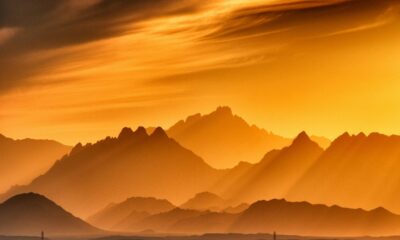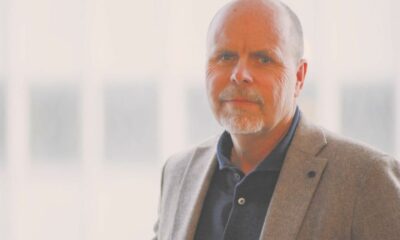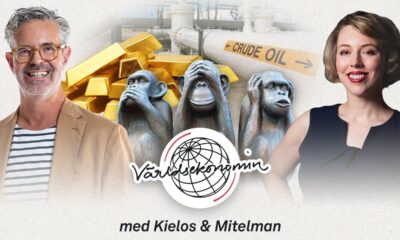Nyheter
Year-End Commodities Outlook
 CPM Group’s analysts and advisors are asked about our expectations for commodities markets and prices for the coming year at this point. Below is a brief overview of the company’s analyses of some of the key points on which the markets currently are focusing.
CPM Group’s analysts and advisors are asked about our expectations for commodities markets and prices for the coming year at this point. Below is a brief overview of the company’s analyses of some of the key points on which the markets currently are focusing.
Commodities have enjoyed remarkably strong price increases since the turn of the century. In 2011, prices of various commodities reached what appears to have been at least near-term peaks and have since been trending lower. CPM Group expects this downward shift in price levels to continue for many commodities, including gold, silver, oil, and various base metals, in the coming year.
Through the remainder of 2012 commodities prices appear vulnerable to declines from present levels. Investors are showing some fatigue and increasing hesitancy about remaining long many commodities. They are concerned about the effects on commodities prices of any further weakness in the economies of the United States, China, India, and Europe, both on gold and silver, and on industrial commodities.
For some industrial commodities, like platinum, palladium, and some base metals, these dips could represent compelling entry points for medium to long term long positions.
Gold and the Fiscal Cliff
Gold prices may be weak for an extended period, possibly averaging 1.0% lower in 2013 from 2012 levels. Prices averaged $1,670 this year through 17 December, up 6.3% from the similar period a year ago. Gold is expected to trade between $1,550 and $1,750 from now through February.
Investors are expected to be more price-sensitive to gold prices in 2013, a theme that began to emerge in the last four months of 2011 and now seems to be firmly entrenched in this market. This price sensitivity is expected to result in lower highs and lower lows in intraday prices throughout next year.
Some investors, and gold marketing groups, have suggested that the fiscal cliff facing the U.S. economy could be bullish for gold and commodities. Actually, it seems that the fiscal policy decisions and resolutions of these issues most likely will have negative price implications for both gold and commodities. Gold prices in fact may be supported in December by investor nervousness over the resolution of this political melodrama, but once the soap opera in Washington has played its last scenes out, the actual economic consequences may be seen as disinflationary and thus not positive for gold.
The resolution of the fiscal cliff will involve some combination of reduced government spending and increased taxes, albeit the extent of spending reductions and tax increases are uncertain. This resolution will result in an economic reality of disinflationary, possibly recessionary, pressures on economic activity. That is negative for gold and silver, as financial assets. It also is negative for industrial commodities in the medium term. The difference between a worst case scenario – falling off the cliff – and a best case scenario in which the U.S. government makes some substantive reductions in government spending and increases in taxes in a sensible way (as opposed to those outlined in the mandatory cuts and tax increases that constitute the looming cliff) is a matter of degrees. There is no bullish outcome for industrial commodities, gold, or silver, in any of the reasonably expected political and fiscal outcomes of the current budgetary talks in Washington. Because a fiscal cliff resolution is inherently negative for short-term economic growth, with the degree by which it will be negative being uncertain, we are bearish on many commodities during the first half of 2013, excluding various commodities whose fundamentals are expected to override short-term turbulence in the commodities sector.
Platinum and Palladium
South African platinum group metals mine output is declining around 12% in 2012. This loss of mine production, an anticipated 15% to 25% increase in operating costs at South African PGM mines for 2012, multi-year deferments of project development, and continuing healthy growth in demand for these metals are expected to contribute to higher prices for an extended period.
Platinum and palladium both are expected to perform well in 2013, however CPM Group is cautious on these markets in the near to medium term, given expectations of weak economic activity in the first half of the year.
Base Metals and China
China’s government is focused on stabilizing real economic growth over the medium to long term, targeting real GDP growth of between 7.5% and 8.5%. CPM Group expects China to succeed in this effort. Demand for base metals will benefit from this stabilization, helping support prices of base metals next year. Investors in North America and Europe will be expected to misunderstand Chinese economic developments and overreact, bidding base metals prices higher.
Fundamentally, lead prices appear most likely to increase at a healthy pace next year, with the other LME-traded base metals facing annual surpluses that could keep prices flat at 2012 annual average levels.
Petroleum
Strong oil production growth from unconventional sources in the United States has weighed on WTI oil prices in 2012. This trend is likely to continue into 2013, albeit at slower rates. Stagnant to lower oil demand in most major industrialized economies could dampen some positive sentiment with regards to improving Chinese demand. Thus, WTI oil is expected to trade largely in a range of $82 and $95 in 2013. Brent oil may decline relative to WTI but stabilize at around $100 or so.
[box]Denna analys är producerad av CPM Group och publiceras med tillstånd på Råvarumarknaden.se.[/box]
Disclaimer
Copyright CPM Group 2012. Not for reproduction or retransmission without written consent of CPM Group. Market Commentary is published by CPM Group and is distributed via e-mail. The views expressed within are solely those of CPM Group. Such information has not been verified, nor does CPM make any representation as to its accuracy or completeness.
Any statements non-factual in nature constitute only current opinions, which are subject to change. While every effort has been made to ensure that the accuracy of the material contained in the reports is correct, CPM Group cannot be held liable for errors or omissions. CPM Group is not soliciting any action based on it. Visit www.cpmgroup.com for more information.
Nyheter
Eurobattery Minerals förvärvar majoritet i spansk volframgruva

Eurobattery Minerals har tagit ett stort steg i sin utveckling genom att underteckna ett avtal om att förvärva en majoritetsandel i volframgruvan San Juan i Galicien, Spanien. Genom en investering på totalt 1,5 miljoner euro i det spanska bolaget Tungsten San Juan S.L. (TSJ), säkrar Eurobattery Minerals en ägarandel på 51 procent – och kontroll över projektet redan efter första delbetalningen.
Investeringen syftar till att bygga en pilotanläggning för mineralbearbetning och starta gruvdriften, som redan har alla nödvändiga licenser och ett preliminärt leveransavtal med Wolfram Bergbau und Hütten AG – en ledande volframproducent inom Sandvik-koncernen. Första leveranserna till Europa väntas ske under andra halvåret 2026, då även positivt kassaflöde förväntas genereras.
”Detta är en game-changer för oss. För första gången går vi från ett prospekteringsbolag till ett bolag med faktiskt intäktspotential inom en snar framtid,” säger VD Roberto García Martínez.
San Juan-projektet har bekräftade malmreserver på cirka 60 000 ton med en volframoxidhalt på 1,3 %. Volfram är en kritisk råvara med ökande strategisk betydelse för industri och försvar, och priset har stigit med över 40 % under 2025.
Med detta förvärv stärker Eurobattery Minerals både sin finansiella ställning och sin position som en europeisk leverantör av kritiska råmaterial – ett viktigt steg mot en hållbar och självförsörjande batterivärdekedja i Europa.
Nyheter
USA ska införa 50 procent tull på koppar

USA:s president Donald Trump har precis meddelat att landet ska införa en tull på 50 procent på basmetallen koppar. Priset på råvarubörsen i USA stiger omgående med 10 procent.
USA har viss inhemsk produktion av koppar, men den inhemska efterfrågan överstiger produktionen. Därför måste landet importera koppar för att täcka behovet, särskilt för användning inom elnät, elektronik, byggindustri och fordonssektorn. De största exportörerna till USA är Chile, Kanada, Mexiko och Peru.
När tullar av denna typ införs uppstår prisskillnader i världen. Handlar man koppar på börsen är det därför viktigt att veta vilken börs man handlar på eller om man använder certifikat så är det viktigt att veta vilka underliggande värdepapper de följer.
Sedan är det som alltid med Trump, begreppet är som bekant TACO, Trump Always Chickens Out. Man ska alltså inte ta några definitiva stora beslut baserat på vad han säger. Saker och ting kan ändra sig från dag till dag.
Nyheter
Ryska staten siktar på att konfiskera en av landets största guldproducenter

En våg av panik sprider sig bland Moskvas elit sedan Vladimir Putins regim inlett en dramatisk offensiv för att beslagta tillgångarna hos Konstantin Strukov – en av Rysslands rikaste affärsmän och ägare till landets största guldgruvföretag, Yuzhuralzoloto. Åtgärden ses som ett tydligt tecken på hur långt Kreml är villigt att gå för att säkra ekonomiska resurser i takt med att kostnaderna för kriget i Ukraina stiger.
Strukovs förmögenhet, som uppskattas till över 3,5 miljarder dollar, byggdes upp under decennier i nära relation med maktens centrum i Ryssland. Men den 5 juli stoppades hans privatjet från att lyfta mot Turkiet. Enligt flera ryska medier deltog den federala säkerhetstjänsten FSB i ingripandet, och Strukovs pass beslagtogs. Händelsen ska vara kopplad till en omfattande rättsprocess där åklagare kräver att hela hans företagsimperium förverkas – med hänvisning till påstådd korruption och användning av skalbolag och familjemedlemmar för att dölja tillgångar.
Företaget själva förnekar att något inträffat och kallar rapporteringen för desinformation. De hävdar att Strukov befann sig i Moskva hela tiden. Trots det bekräftar rättsdokument att både han och hans familj förbjudits att lämna landet, och att myndigheterna snabbt verkställt beslutet.
Det som nu sker är en del av ett större mönster i ett Ryssland präglat av krigsekonomi: staten tar tillbaka kontrollen över strategiska sektorer som guld, olja och försvarsindustri – industrier som nu allt mer mobiliseras för att finansiera och stödja krigsinsatsen. Intressant nog handlar det inte om att Strukov ska ha varit illojal mot regimen – tvärtom har han varit en lojal allierad, med politiska uppdrag knutna till Putins parti. Men lojalitet räcker inte längre som skydd.
Medan tidigare utrensningar ofta riktade sig mot krigskritiker eller de som flydde landet, drivs dagens tillgångsövertaganden av något mer fundamentalt: ekonomisk nöd. De växande sanktionerna har nästan helt strypt inflödet av utländskt kapital. Statens oljeintäkter minskar och budgetunderskotten växer. Putins lösning är att vända sig inåt – till de oligarker han själv lyfte fram – för att fylla statskassan.
Det här är inte ett enskilt fall. På senare tid har flera framstående affärspersoner hamnat i plötsliga rättsliga tvister, omkommit under mystiska omständigheter eller sett sina bolag tas över av staten. Den oskrivna överenskommelsen som länge gällde i Putins Ryssland – rikedom i utbyte mot lojalitet – håller på att kollapsa.
Den 8 juli väntar en rättsförhandling som kan avgöra framtiden för Strukovs affärsimperium. Men budskapet till Rysslands näringslivselit är redan tydligt: ingen är för rik, för lojal eller för nära den politiska makten för att gå säker. I ett Ryssland där kriget kräver allt större uppoffringar riskerar oligarker att snabbt förvandlas till måltavlor.
-

 Nyheter3 veckor sedan
Nyheter3 veckor sedanMahvie Minerals växlar spår – satsar fullt ut på guld
-

 Nyheter4 veckor sedan
Nyheter4 veckor sedanUppgången i oljepriset planade ut under helgen
-

 Nyheter4 veckor sedan
Nyheter4 veckor sedanLåga elpriser i sommar – men mellersta Sverige får en ökning
-

 Nyheter3 veckor sedan
Nyheter3 veckor sedanJonas Lindvall är tillbaka med ett nytt oljebolag, Perthro, som ska börsnoteras
-

 Analys3 veckor sedan
Analys3 veckor sedanA muted price reaction. Market looks relaxed, but it is still on edge waiting for what Iran will do
-

 Nyheter3 veckor sedan
Nyheter3 veckor sedanOljan, guldet och marknadens oroande tystnad
-

 Analys4 veckor sedan
Analys4 veckor sedanVery relaxed at USD 75/b. Risk barometer will likely fluctuate to higher levels with Brent into the 80ies or higher coming 2-3 weeks
-

 Nyheter3 veckor sedan
Nyheter3 veckor sedanDomstolen ger klartecken till Lappland Guldprospektering















